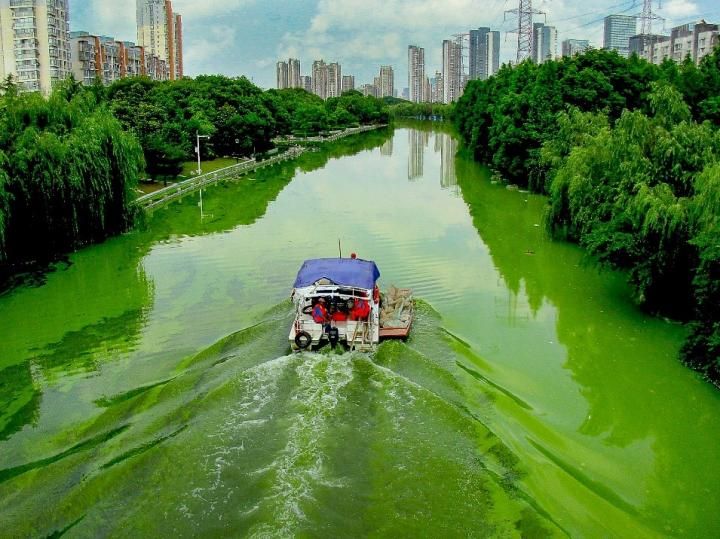Bad Blooms: Researchers Review Environmental Conditions Leading to Harmful Algae Blooms
Published on by Water Network Research, Official research team of The Water Network in Technology
When there is a combination of population increase, wastewater discharge, agricultural fertilization, and climate change, the cocktail is detrimental to humans and animals. This harmful cocktail produces harmful algal blooms, and many of these are toxic to humans and wildlife.
By S.J. & Jessie E. Quinney College Of Natural Resources, Utah State University

Toxic cyanobacterial (Microsystis) bloom in the Liangxi River, Wuxi, China. (Credit: Hans Paerl, Wiley Publishing)
Wayne Wurtsbaugh, Professor Emeritus in the Watershed Sciences Department at Utah State University, along with Hans Paerl and Walter Dodds published a global review of conditions that lead to these harmful algal blooms in rivers, lakes, and coastal oceans. Wurtsbaugh says that the review will be an excellent resource for students studying pollution and for managers wanting to review recent advances in this field of study. Their review highlights how agricultural, urban, and industrial activities have greatly increased nitrogen and phosphorus pollution in freshwater and marine systems. This pollution has degraded water quality and biological resources costing societies billions of dollars in losses to fisheries, the safety of drinking water, increases to greenhouse gas emissions and related social values. Their findings have been published in, "Nutrients, eutrophication and harmful algal blooms along the freshwater to marine continuum."
Their scientific review highlights that although individual bodies of water may be more effected by increases in either phosphorus or nitrogen, the unidirectional flow through streams, lakes, and into marine ecosystems creates a continuum where both nutrients become important in controlling the algal blooms. The authors report how increasing nutrients has caused harmful blooms in waters as diverse as Utah Lake (Utah), mid-west agricultural streams, and the Gulf of Mexico where a 5,800 mi2 (15,000 km2) dead zone has developed. The authors conclude that although the specifics of algal production varies in both space and time, reducing the human causes of both phosphorus and nitrogen may be necessary to decrease the harmful algal blooms along the freshwater to marine continuum. These algae blooms make waters dysfunctional as ecological, economic, and esthetic resources.
The technology currently exists to control excessive nutrient additions, but more effective environmental regulations to control agricultural nutrient pollution, and investment in more advanced wastewater treatment plants will be needed to reduce these inputs and improve water quality. The enhancement of the quality of freshwater and coastal systems will become essential as climate change and human population growth place increased demands for high quality water resources.
Reference :
Wayne A. Wurtsbaugh, Hans W. Paerl, Walter K. Dodds, "Nutrients, eutrophication and harmful algal blooms along the freshwater to marine continuum", Wiley, April 2019, DOI: 10.1002/wat2.1373
Research was funded by Ecology Center at Utah State University, US National Science Foundation, Dimensions of Biodiversity, NSF Konza LTER program
Source: Utah State University
Media
Taxonomy
- Pollutants
- Micropollutants
- Nutrients Recovery
- Algaecides
- Algae
- Pollution
- Hydrology Nutrient Cycling
- Nutrient Reduction and Removal